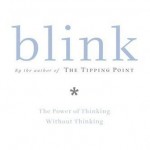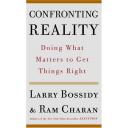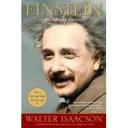Among all the business starting books I have read, this one is by far the best and most practical one. The author, Michael Masterson, has had lots of experience doing this. And the best part is that he’s not a natural salesman by training. He had to learn it by doing. This gives me hope …
Masteron goes through roughly the various stages of business and presented the strategies for each stage:
Stage 1 (0~ $1M revenue): Sales job is #1. Sell your first product first. Don’t worry about company name, logo, or legal identity. Get the 1st sales and then find and fine-tune your unique selling proposition (USP). Imitate your competitor including where to place ads. Produce me-too product. Give your customer better or perceived-better product (Fedex vs. 7-up). Stage 1 entrepreneur must acquire Critical Mass of Qualified Customers (CMQC) as the primary task. Use of the “train” analogy – it takes energy and time to move a stationary train toward the city of gold. Once it’s moving, the momentum may carry itself.
Stage 2 ($1M ~ $10M): Add more product lines. Front end vs. back end: Front end to acquire customers, Back end to make profits. The key to profit is evolution not revolution – 80% old and 20% new is a good mix. Back-end sale represent goodwill that people are willing to buy continuously
Ordinary vs. tipping point products (1:9 ratio): ordinary products brings the profits. Creating tipping point products takes collaboration and good timing. The author borrowed a lot of the ideas from “Tipping Point” by Malcolm Gladwell and applied it to real-life situations.
Stage 3 ($10M~50M):
Innovation and speed are the two critical methods to take the company to the next level. For innovation, adopt “accelerated failures” and “ready, fire and aim.” To carry out the action, find a champion, who can get the idea realized, must believe in the idea, have the authority to execute, have the experience to make wise decisions along the way. It’s better to postpone if a champion cannot be found.
About getting mentored: 1) Ask for mentor around you (up, down, around), 2) Show appreciation – reciprocate, 3) Take responsibility for your own actions.
The objective of business is to serve your customers – not making you or your employee rich. If you can serve your customers, the money will follow.
On brainstorming: create marketing copy within 24 hrs and set a limit on time, set a goal and high standard, code of equality (everyone pitches in), set rules, no specific criticism of idea (how to make it better not what’s wrong with it), record the meeting. Have a culture of creativity.
A “ready, fire, aim” business proposal (must be finished within 24 hrs to keep momentum going) consists of 1-4 pages, ballpark financial projection including costs, identification of critical tasks, project champion and support people, timeline for the major tasks to be completed, and a plan ‘B’ (like CNN).
Project improvement: “If the product is not selling well, don’t fix it” It’s much smarter to drop it and come up with a significantly different product. If the product sell well, improve it.
Why people buy? To feel good and to solve a problem. Why Binge spending? 1) Feel good that they have more money to spend, 2) to feel good about buying, 3) sold by the specific marketing program.
The 20 marketing lessons are impressive. They should be in the MBA marketing textbook. The 7 myths are good, one of them being that employees must own a part of company.
Hire Intrapreneurs (vs. Entrepreneur) to take your company to the next level. Intrapreneurs may not want to start his/her own business but is innovative enough to keep the company crank out tipping point new products.
Ready, Fire, and Aim way of leading your life. Get started on your dream and don’t worry about failure or trying to perfect it. Author’s short film career is an example.
I utterly enjoyed this book. I listened to the audio book three times. And each time I got something more. I suppose I will read it soon. The wonderful effect of this book that it makes starting a business sound easy enough that you’d want to go out and start a company right away. Maybe I will …








